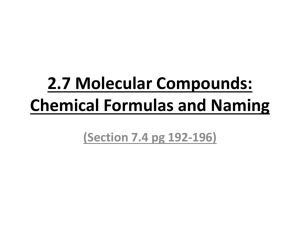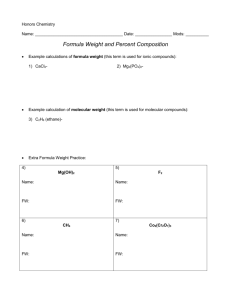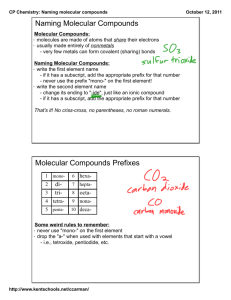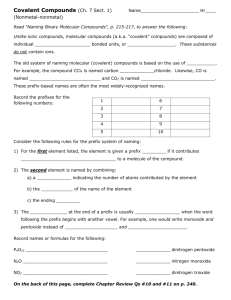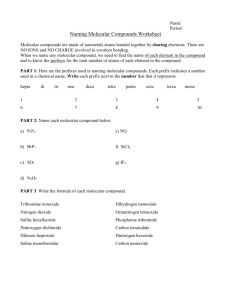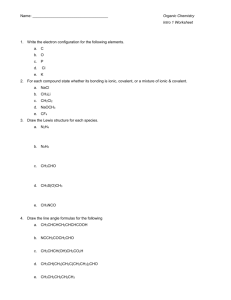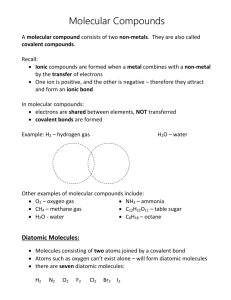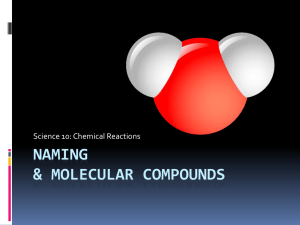File - Chemistry from AZ
advertisement
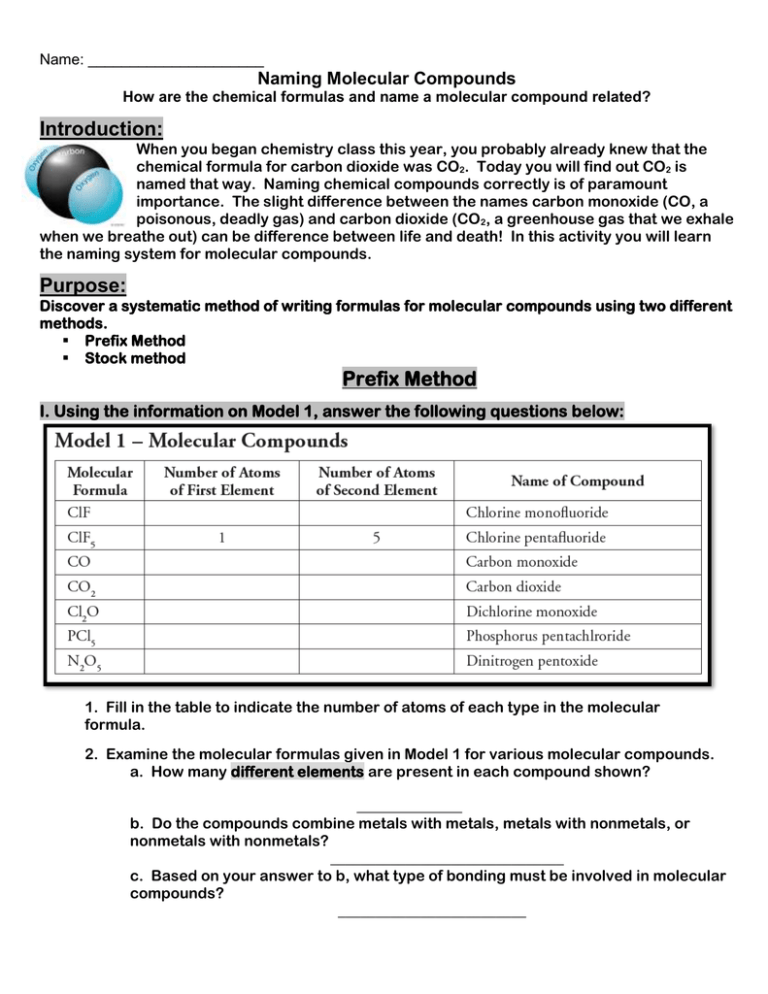
Name: _____________________ Naming Molecular Compounds How are the chemical formulas and name a molecular compound related? Introduction: When you began chemistry class this year, you probably already knew that the chemical formula for carbon dioxide was CO2. Today you will find out CO2 is named that way. Naming chemical compounds correctly is of paramount importance. The slight difference between the names carbon monoxide (CO, a poisonous, deadly gas) and carbon dioxide (CO2, a greenhouse gas that we exhale when we breathe out) can be difference between life and death! In this activity you will learn the naming system for molecular compounds. Purpose: Discover a systematic method of writing formulas for molecular compounds using two different methods. Prefix Method Stock method Prefix Method I. Using the information on Model 1, answer the following questions below: 1. Fill in the table to indicate the number of atoms of each type in the molecular formula. 2. Examine the molecular formulas given in Model 1 for various molecular compounds. a. How many different elements are present in each compound shown? ______________ b. Do the compounds combine metals with metals, metals with nonmetals, or nonmetals with nonmetals? _______________________________ c. Based on your answer to b, what type of bonding must be involved in molecular compounds? _________________________ 3. Compare the following two molecular formulas: ClF ClF5 The name “chlorine fluoride” is not sufficient to identify the compound. Explain why. _______________________________________________________________________ _______________________________________________________________________ 4. Assuming that the name of the compound gives a clue to its molecular formula, predict how many atoms each of these prefixes indicates, and provide two examples. Prefix mono- # of Atoms Two examples Example #1 Example #2 di- Example #1 Example #2 penta- Example #1 Example #2 II. Using the information on Model 2, answer the following questions below: 1. Examine the prefixes in Model 2. Fill in the numerical value that corresponds to each prefix. 2. What suffix (ending) do all the compound names in Model 2 have in common? ________ 3. Carefully examine the names of the compounds in Model 2. When is a prefix NOT used in the front of the name of the element? _______________________________________________ 4. Consider the compound NO a. Which element, nitrogen or oxygen, would require a prefix in the molecule name? ____________ b. Name the molecule NO. ____________________________________ 5. Using the information you learned from Model 1 and Model 2, name each of the following molecular compounds. 6. Write the molecular formulas for each of the following compounds. Stock System: Using Roman Numerals Let’s Practice: Molecular Name (Prefix method) Formula NF3 Oxidation State (First Element) Name (Stock Method) CBr4 SO2 XeF6 Draw the structural formula for the following compounds Nitrogen trifluoride Phosphorous trihydride Carbon tetraiodide Challenge: Dinitrogen tetrachloride
